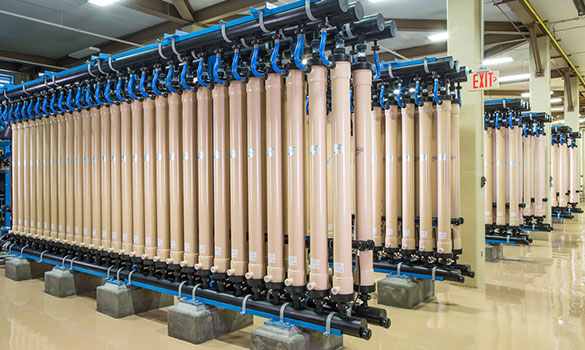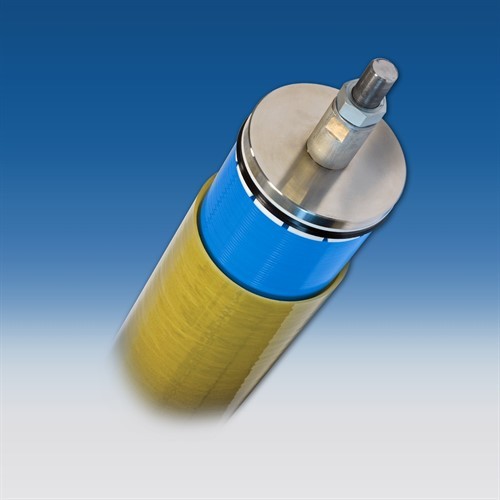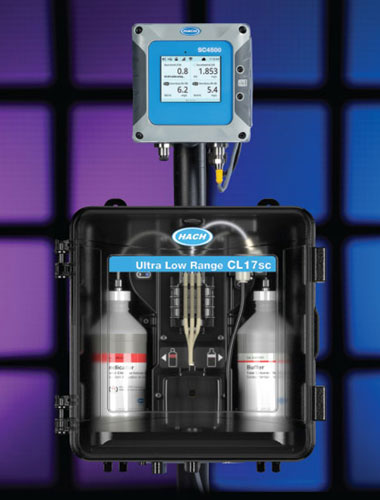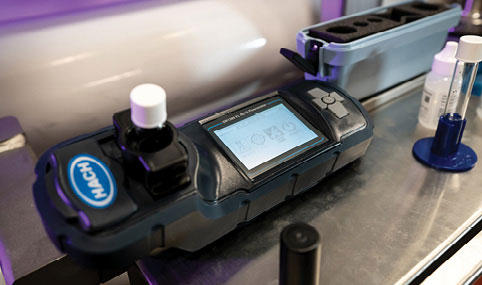-
English (US)
Choose your country or region:
Europe
Asia - Australasia
Middle East - Africa

Reverse osmosis (RO) membranes have arguably a greater impact on operations than any other water treatment process. They are extremely effective in removing inorganic contaminants but are also highly susceptible to fouling, oxidation and scaling. A lack of precise, real-time monitoring of RO membranes’ health can drive significant costs in the form of biofouling, excessive chemical use, frequent cleaning and maintenance, plant downtime and early membrane replacement.


According to a recent study in the scientific journal, Desalination, the cost of RO fouling at one desalination plant in the Netherlands represents approximately 24% of total plant operating expenses. The bulk of that expense is incurred by early replacement of membranes. 1
Reverse osmosis occurs when a semipermeable membrane allows water molecules under high pressure to pass through, while flushing dissolved inorganic compounds to the drain. Cross-flow separates the water into two pathways: permeate and reject.

 Applicable to most RO customers
Applicable to most RO customers
 Applicable to fewer RO customers
Applicable to fewer RO customers
 Filter aid
Filter aid
 Prefiltration (optional)
Prefiltration (optional)
 Chlorination
Chlorination
 Cartridge filter
Cartridge filter
 Antiscalant
Antiscalant
 Dechlorination
Dechlorination
 RO membrane
RO membrane
 Biocide and membrane cleaner
Biocide and membrane cleaner
 Reject
Reject
 Permeate
Permeate
There are many parameters that are important when monitoring RO membrane performance, one of the most critical is chlorine. Chlorination and dechlorination are key steps in nearly all industrial and municipal treatment processes when RO membranes are used. As it is difficult to detect exact levels of chlorine, plant operators will often opt to completely remove all traces of it. While the end result is zero residual chlorine (meeting water quality goals) over-dechlorination can cause a host of unnecessary consequences and expenses along the way.
1
There is the cost associated with the superfluous chemicals used to completely remove chlorine.
2
The absence of chlorine can lead to biofouling, which then requires additional cleaning and maintenance or the use of costly biocides.
3
The efficiency of the membranes is negatively impacted, forcing replacement months sooner than would normally be required.
Example A:
Many membranes are rated to 1,000 parts per million (ppm)-hours of free chlorine exposure before salts passage doubles. If you expose your first-stage RO to a continuous average of 38 parts per billion (ppb), you will reach 1,000 ppm-hours in 36 months.
If you increase your average exposure by just 10 ppb to 48 ppb, you will reach the same 1,000 ppm-hours in 28.5 months. That means potentially replacing your first-stage RO membranes seven and a half months sooner from an average increase of 10 ppb free chlorine exposure.
Example B:
Your facility might spend as much as four times the amount cleaning membranes for the same unit of water if not properly maintained, versus a properly maintained system at a quarter of the cost.
When membranes foul the costs are substantially higher. Operations could increase by 50% to as much as 100% for a typical plant. 2
The Hach® Ultra Low Range CL17sc can detect lower levels of chlorine than ever before, helping plant operators minimize membrane fouling, reduce operational expenses and confidently meet regulatory reporting requirements.

Lower limit of detection, quantitation and accuracy:
Cumulative Chlorine Counter™:
Applications – Dechlorination, monitor residual chlorine to protect membranes and control product water quality:
Hach’s DR1300 FL fluorescence tests can detect lower levels of chlorine and sulfite than ever before, helping plant operators minimize membrane fouling, reduce operational expenses and confidently meet water quality requirements.
Lower limit of detection with increased accuracy through simplified tests:
Total Chlorine = 3-100 ppb measuring range
Free Chlorine = 2-100 ppb measuring range
New technology bringing easy-to-perform ultra-low range tests for total chlorine, free chlorine and sulfite
New sulfite tests remove the guessing from how much to dose in your sodium bisulfite dechlorination!
Applications – Physical and Chemical Dechlorination, monitor residual chlorine to protect membranes and control product water quality
Control dechlorination process efficiently
Prolong RO membrane life

Manufactured by Pyxis®

1 Jafari, M. et al. “Cost of fouling in full-scale reverse osmosis and nanofiltration installations in the Netherlands.” Desalination, March 2021. https://doi.org/10.1016/j.desal.2020.114865
2 SAMCO. “How Much Does It Cost to Properly Maintain Membrane Filtration Systems vs. Treat Fouled Membranes?” February 2019. https://www.samcotech.com/cost-to-properly-maintain-membrane-filtration-systems
Contact us for tech support, service, sales, or to get a quote.